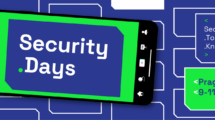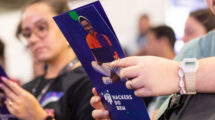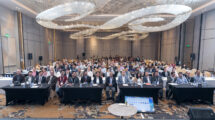Words: Lee Johnson, Toshiba
Quantum Key Distribution (QKD) provides provably secure protection against attacks by quantum computers on current public key encryption protocols and infrastructures. QKD is being increasingly deployed globally and there are some important considerations for practical QKD deployment in today’s fibre networks.
High optical budgets and high Secret Key Rates (SKR)
QKD systems should provide high optical loss budgets to enable design and deployment flexibility and to also mitigate against future potential fibre degradation. High Secret Key Rates (SKRs) are also important, to allow frequent key rotation and to service multiple users with a range of diverse use cases. Toshiba designed their QKD systems to be practically deployable in today’s fibre networks, they have loss budgets (up to 30 dB) and high Secret Key Rates (300 kbit/s at 10 dB loss).
Quantum and Classical data co-existence
QKD should also integrate with existing deployed fibres and DWDM data services – it is important that the QKD service can co-exist with the large number of DWDM data channels and the high optical launch powers that exist on today’s networks. Toshiba’s multiplexed QKD system transmits the quantum information at 1310 nm, multiplexing this with classical C band DWDM data channels.
Researchers at Orange demonstrated effective co-propagation of classical and quantum signals with high secret bit rates using the Toshiba multiplexed QKD system. The research showed that 60 DWDM data channels in the C band co-propagated well with the QKD quantum channel in the O band and that the QKD system could accommodate high optical launch powers of ~17 dBm, (graph shown below).

The research found that the high number of WDM channels used had a minimal impact upon SKR. Instead, it was found that the aggregated data channel optical launch power used was the most influential factor on the SKR. As a result, the researchers proposed a new metric – Co-propagation Efficiency (CE) – which can estimate the performance of the QKD system (its ability to deliver secure keys successfully with a good SKR) in a co-propagation regime while considering the total power of the classical channels and the transmission distances.
The full research paper can be read here https://arxiv.org/abs/2305.13742
Active stabilisation for optimal operation
Toshiba QKD systems use active stabilisation technology, whereby dedicated stabilisation pulses are embedded in the encoding pattern. These references enable continual real-time feedback algorithms to automatically correct the polarisation, timing and phase of light, minimising the error rate, (graphic below).

The University procured use of a 46 km length of trackside fibre, running within 5 metres of a main railway line. The fibre experienced significant vibrations and mechanical noise due to a high volume of railway traffic on the line.
These mechanical vibrations and thermal fluctuations can affect various properties of propagating light, such as polarisation, phase and timing delays, subsequently reducing performance and increasing error rates in QKD.
Toshiba supplied a multiplexed QKD system which was first set up in the laboratory to obtain baseline performance data, then moved it to the railway sites.
Throughout the entire deployment the QKD performance was excellent. The system generated quantum keys at a secure bit rate of 112 kbps over a distance of 46 km, (quantum channel loss >15 dB) with a quantum bit error rate (QBER) of 3.90% ± 0.41%, only marginally higher than the lab results.
This is a promising indicator of how QKD can practically bring quantum-security to critical infrastructure communications, while also highlighting the opportunities for using trackside fibre in future quantum communication networks.


Read or download the full magazine here







